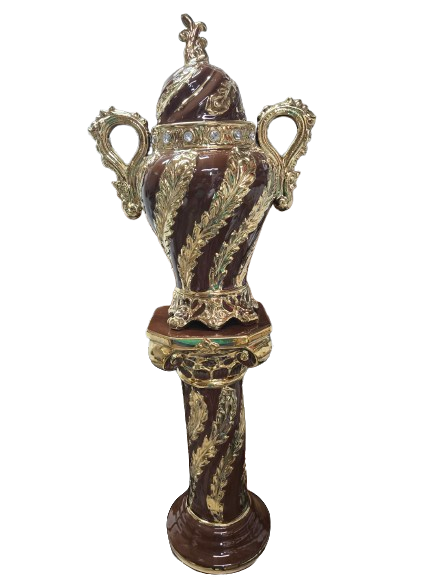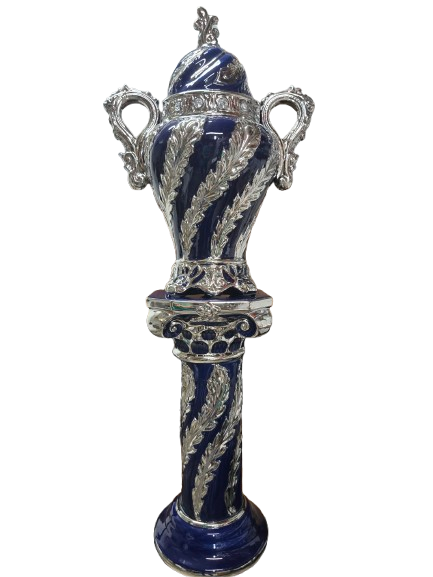Unlocking Yoruba Beads Meaning: An Insightful Journey
Yoruba beads, with their vibrant colors and intricate designs, are more than just beautiful ornaments. They hold deep cultural significance and meaning, often representing stories, beliefs, and traditions of the Yoruba people. This insightful journey will unravel the layers of meaning behind these captivating beads.
The Historical Significance of Yoruba Beads
Yoruba beads have been an integral part of the Yoruba culture for centuries. Used in various ceremonies and rituals, these beads carry significant historical weight, symbolizing power, status, and spiritual beliefs. In the Yoruba kingdom, beads were often worn by royalty and were seen as a sign of wealth and nobility. Their origins stretch back to ancient times when beads served not only decorative purposes but also as a form of currency and a measure of value. Over time, the detailed craftsmanship involved in their creation became a reflection of the skills and artistry of the Yoruba people. Historians have found that these beads were often exchanged in trade, signifying alliances and partnerships between different clans and tribes. Through this lens, one can understand how deep-seated the tradition of beadwork is within Yoruba culture.
Beads were not just limited to adornment but served as historical records of significant events within communities. For the Yoruba, each bead tells a story, and when strung together, they weave narratives passed down through generations. This storytelling aspect is crucial, as it preserves not only personal and family histories but also the broader cultural heritage. In recent archaeological findings and studies, like those highlighted by the African Studies Review, researchers have delved deeper into understanding the significance of these beads as symbols of Yoruba ontology and materiality, revealing their role in cultural and social systems since AD 1000.
Colors and Their Symbolism
Each color in Yoruba beads holds a specific symbolism. For instance, red can stand for life and vitality, while white often represents purity and peace. The combination of colors tells unique stories, making every bead strand deeply meaningful. In Yoruba culture, blue beads are often associated with Yemoja, the Orisha of motherhood and the ocean, symbolizing nurturing and protection. According to Guardian Nigeria, these vibrant beads not only indicate social status but also have protective qualities against evil spirits and negative energies. This color symbolism extends to other contexts, such as the Orishas, where each deity is associated with distinct colors that convey their powers and characteristics.
For example, beads with alternating patterns of red and white are linked to Shango, a deity associated with fire and justice, representing the balance between rage and tranquility. In Everything Santeria, an account explains how these color patterns extend beyond aesthetics to reflect deeper spiritual meanings and the attributes revered in Orisha worship. Through this, the Yoruba cosmology communicates complex ideas about power, nature, and morality, which bead colors vividly encapsulate. The Yoruba people’s ability to infuse beads with such profound symbolism showcases the depth of their cultural expressions.
Bead Patterns and Their Meanings
Beyond color, the patterns of beads convey even deeper messages. Different patterns can signify various ranks, personal achievements, or spiritual protection. Understanding these patterns adds a layer of appreciation for the artistry involved. Patterns are often created to represent familial or tribal lineage, ensuring that one’s heritage and identity are visibly displayed and preserved. According to research presented in ProQuest, bead patterns in Yoruba society play a critical role in showing solidarity and unity, acting almost as a visual language in which generations communicate their histories and social dynamics.
In traditional Yoruba society, specific bead patterns are reserved for sacred rituals and priests known as Babalawos, who conduct divination practices. The intricate designs serve not merely as decoration but as functional objects during spiritual rites. The concept of Ifá, explored further on Botanica Nena, highlights the significance of these patterns during spiritual consultations with deities, where beads play a role in mediating between the divine and the mortal realms. This idea exemplifies the transcendent power imbued within these seemingly simple objects.
Common patterns might include sequences that represent balance, protection, or spiritual harmony. For example, certain rhythms in the patterns align with the beat of traditional Yoruba music, signifying how deeply embedded these beads are within the cultural fabric. Hence, the making and wearing of these beads is as much about artistic expression as it is about understanding the spiritual intricacies of Yoruba beliefs.
Yoruba Beads in Ceremonial Practices
From weddings to religious rituals, beads play a crucial role in Yoruba ceremonies. Their use reflects devotion and respect, serving as symbols of commitment and connection between the spiritual and physical worlds. Ceremonies often see individuals adorned in elaborately beaded attire, symbolizing purity, prosperity, and a bridge to the ancestors. The crafting of these garments often involves a meticulous selection process, ensuring that the rituals they are used in honor the spirits appropriately.
In Yoruba practices, beads serve as offerings to deities and ancestors, symbolically bridging the worlds of the living and the divine. The presence of beads is universal across various ceremonial practices, each proclaiming profound respect and reverence. They create a shared experience among participants, threading together past, present, and future generations in a continuum of spiritual affinity and dedication. This use of beads is crucial in ceremonies where such spiritual connections are celebrated and reaffirmed.
The Yoruba view beads as tools of empowerment and mediums of communication with the spiritual world. As such, participants in ceremonial occasions might wear special bead configurations designed to enhance their spiritual presence or intent during the rites. This usage is not merely decorative but serves a vital role in channeling spiritual energy and intentions, which speaks volumes about the Yoruba’s profound engagement with their spiritual heritage.
Modern Use and Adaptation of Yoruba Beads
Today, Yoruba beads have transcended their traditional uses and are now seen in modern fashion and accessories. While they maintain their cultural significance, they also stand as a testament to the blending of past and present. Designers incorporate Yoruba bead motifs into contemporary fashion, symbolizing a fusion of traditional symbolism with modern aesthetics. This adaptation ensures the relevance of traditional crafts in modern society, allowing the global community to appreciate the heritage they represent.
The rich history and symbolism of Yoruba beads are often highlighted in exhibits and collections, such as those found in the Cuentas por Libras para Collares collection, showcasing their versatility and universal appeal. In this light, the Yoruba people have successfully integrated their age-old traditions into contemporary settings, securing a place for their cultural expressions in a globalized world. The beads now find themselves woven into narratives of cultural preservation, global identity, and continuous innovation.
Moreover, the modern adaptation of Yoruba beads marks a cultural renaissance, with increased interest in African arts and symbolism worldwide. This global appreciation has inspired new generations to explore, reinterpret, and integrate traditional Yoruba beadwork into their cultural and artistic lexicon. This transformation demonstrates the dynamic nature of Yoruba culture, as it evolves while maintaining its symbolic and spiritual core, ensuring that the meanings behind these beads continue to inspire and resonate with diverse audiences.
A Deeper Understanding of Yoruba Beads
The journey through the world of Yoruba beads reveals a tapestry rich in tradition, spirituality, and artistic expression. These beads are not merely decorative; they are symbols of identity, heritage, and community. Understanding their meanings allows us to appreciate the profound connections they represent, linking the past with the present and fostering a deeper respect for Yoruba culture.





































Dejar un comentario